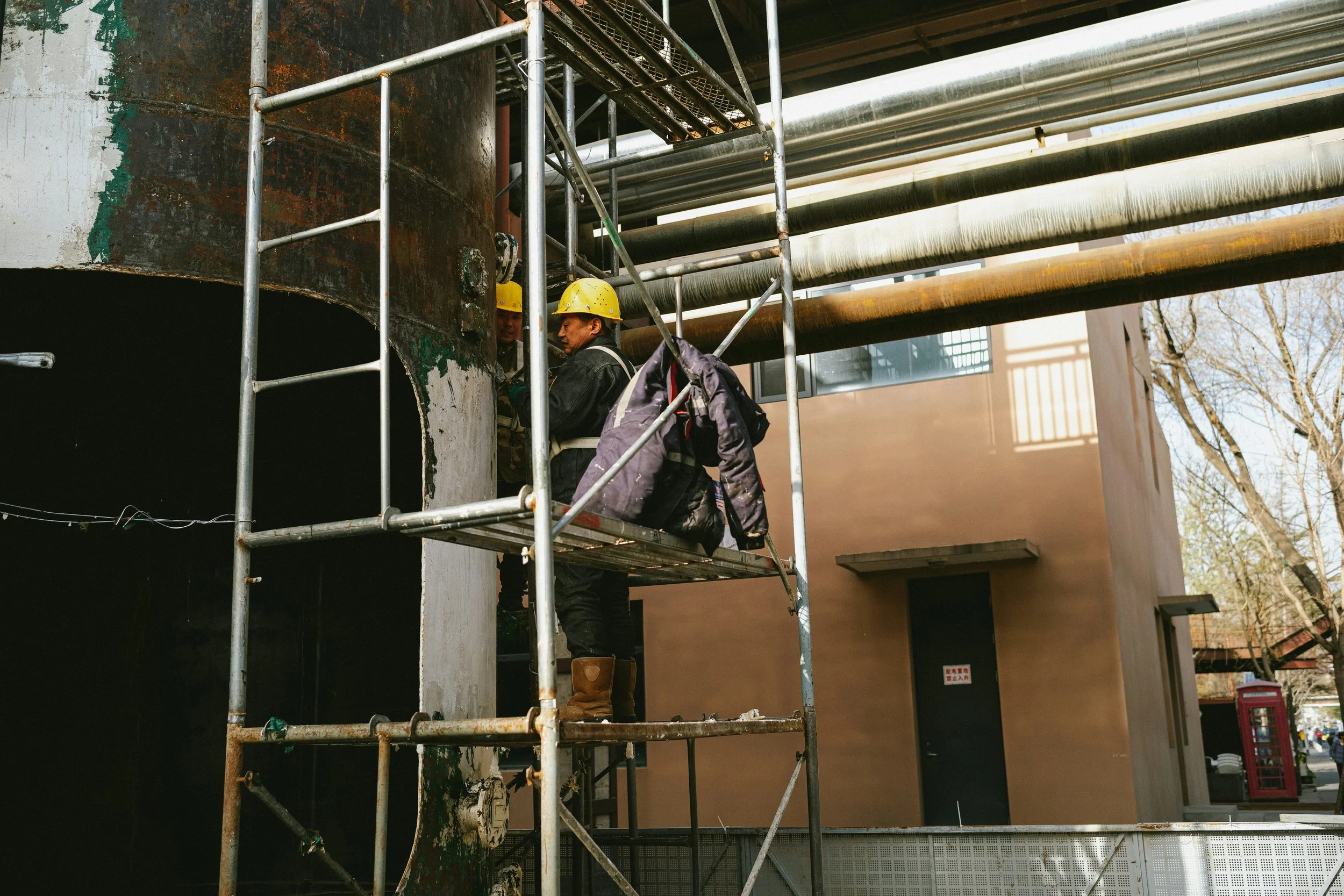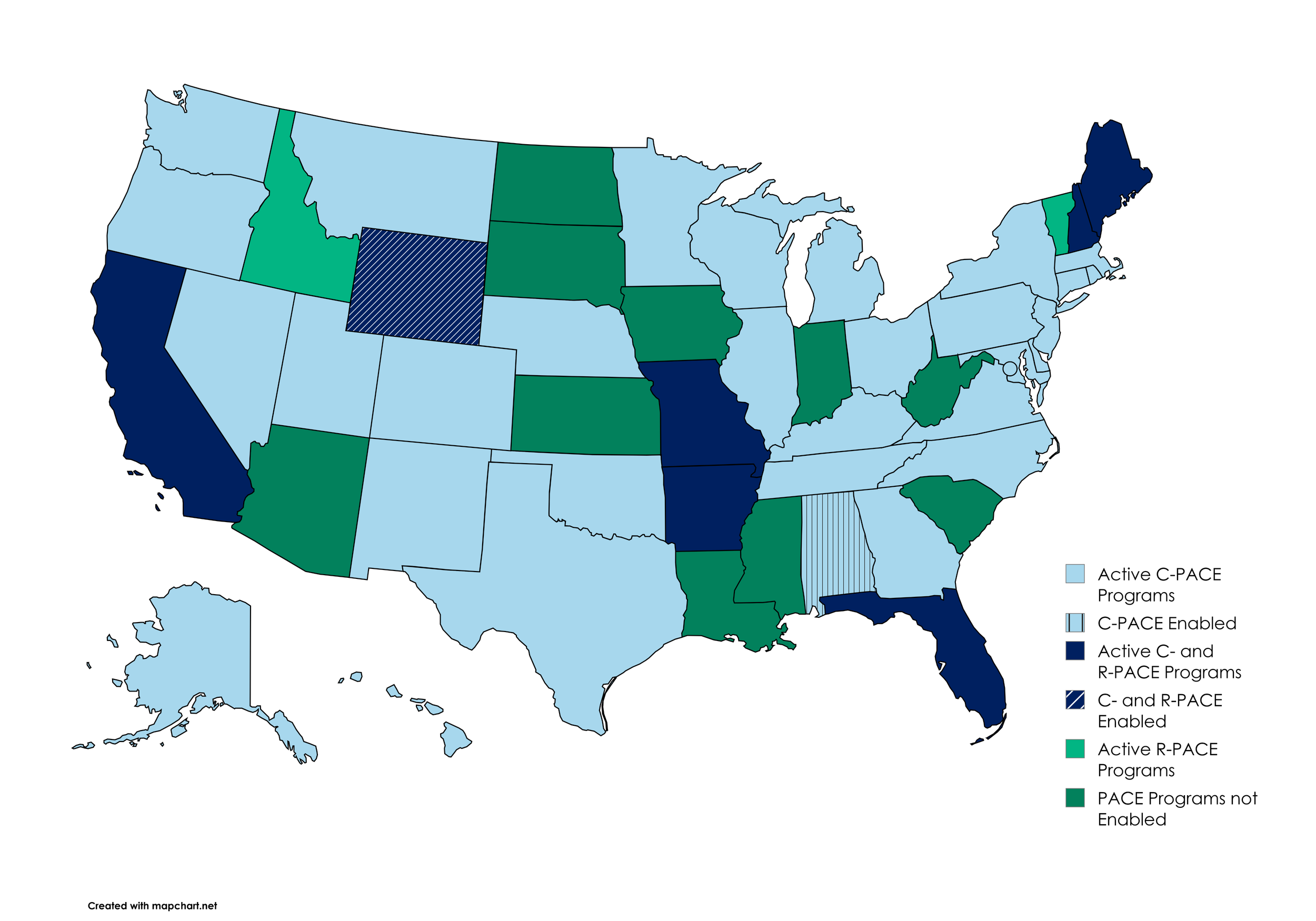
PACE Funding in West Virginia
This Science & Technology Note provides an explanation of Property Assessed Clean Energy (PACE) programs, including their risks and benefits, identifies steps the legislature would need to take to implement a program in West Virginia, and highlights completed projects in other jurisdictions that may be of interest to West Virginians.
Research Highlights
PACE programs have been growing in popularity as a loan program to fund both new building and renovation projects.
PACE loans are granted through private funders and collected by local governments via special assessments.
West Virginia could implement a PACE program to provide a low-risk funding mechanism for renovation, remediation, or redevelopment of existing buildings.
PACE programs provide long-term loans as a way for building owners to make energy efficient improvements to their property. This Science & Technology Note highlights the impacts of PACE programs across the country, focuses on state responsibilities in PACE programs, and identifies key considerations for establishing a PACE program in the state of West Virginia.
What are PACE Programs?
Property Assessed Clean Energy (PACE) programs have expanded across the country as a way to fund energy efficiency and resiliency projects. In order for PACE programs to operate in a state, the state must first enable the programs via legislation. So far, 40 states and Washington DC have PACE programs enabled. Most PACE programs are commercial PACE programs (C-PACE), designed for new and existing commercial properties. Similar programs exist for residential properties (R-PACE), although there are fewer of these programs than their commercial counterparts. Projects eligible for C-PACE funding often include energy efficient lighting upgrades, improvements to HVAC systems and insulation, roof replacements, solar installation, electric vehicle charging stations, and stormwater management.
PACE program implementation in the US. Most states have C-PACE programs in place. Some have both C- and R-PACE, while others only have R-PACE programs. West Virginia is one of 10 states with no PACE program model. Adapted from C-PACE Alliance, PACENation, and State Climate Policy Dashboard.
C-PACE loans cover 100% of the project’s needs, with no down payment required, and are typically paid back over 20-30 years via a property tax-like valuation. If a building is sold, the loan transfers between building owners. Interest rates on C-PACE loans typically range from 5-10%. Funding for C-PACE projects comes from many private lenders across the nation. Local governments then collect payments through a special assessment process, the same way that money for schools and fire departments are collected. Companies often opt for C-PACE financing instead of a traditional loan due to their transferability, low interest rates, long repayment times, and lack of monthly payments.
Opposition to PACE programs, particularly to R-PACE programs, arose from lenders concerned with the PACE loan structure. Programs often place the PACE loan ahead of the actual mortgage loan, meaning in the case of default or foreclosure, the property could be forcibly sold, and the portion of the PACE loan in default would be paid before the mortgage. This is less of a concern with C-PACE than with R-PACE, as between 2008 and 2018, only 1 C-PACE project out of thousands resulted in a defaulted loan. An additional mechanism that many states have begun to adopt to reduce risk is requiring assent from the mortgage lender to begin a C-PACE project. Consumer protection groups are also concerned that unethical contractors may take advantage of PACE participants through predatory marketing. Programs may address this by certifying trusted contractors to perform PACE projects.
How are PACE programs structured?
C-PACE programs tend to fall under 5 support structures. Larger PACE programs are a growing trend, as they can be more efficient and cohesive. For example, Maryland, Virginia, and Washington DC operate under a regional C-PACE structure through the Mid-Atlantic PACE alliance. Coordination at a larger scale can be helpful to ensure similar eligibility and programmatic requirements across jurisdictions.
| C-PACE Model | Description | Example Program |
|---|---|---|
| Regional | Programs across multiple states collaborate to coordinate consistent standards and best practices. | Mid-Atlantic PACE Alliance (Maryland, Virginia, Washington, DC) |
| Statewide | One statewide program, local governments can opt in. | Connecticut |
| State and Local Option | A statewide program exists, and gives municipalities the option to join the statewide program or start an independent C-PACE program. | Michigan |
| Strategic State Support | States allow localities to develop their own C-PACE programs, but provide technical assistance and program models that local programs can opt to use. | Texas |
| Limited State Support | Programs are primarily local, limited state resources and program coordination are in place. | California |
In order to run a C-PACE program, a state must pass PACE-enabling legislation containing several components, including determination of project eligibility, declaring that private energy improvements serve a public purpose, and specifying the process for establishment. Local governments must opt to participate in the program, link loans to properties, and collect payments. Program managers must process applications, coordinate financing, and market the program. Some local governments have concerns about their ability to administer a PACE program. In these cases, program management can be outsourced to specialized third party companies or a statewide or regional model could be used. Michigan estimated that a municipality may save $150,000-750,000 by participating in the statewide program instead of establishing their own.
What is the impact of PACE programs?
Since the first PACE programs were established, over 350,000 projects have been completed in the US, resulting in more than $29 billion in economic impact. In the future, PACE programs are estimated to have a $2 trillion future market opportunity. A 5-year study of PACE programs demonstrated that they increased business revenue, GDP, personal income, employment, and government tax revenue. Local governments often cited increased job creation, lowered business costs, and better maintained buildings as reasons to participate in a C-PACE program. Over a 50-year period, C-PACE improvements are projected to provide 42 years of economic gains. Predictions from PACENation, a PACE advocacy group, estimates the West Virginia C-PACE market to have the potential to create $9 billion in cumulative economic output and nearly 2,000 jobs over the lifetime of PACE improvements.
PACE Implementation in West Virginia
If West Virginia wanted to implement a PACE program, the first step would be to enable a PACE program through legislation. West Virginia could seek to join the established Mid-Atlantic PACE Alliance in order to take advantage of systems and resources that neighboring states already make use of and reduce the burden on the state and municipalities to begin their own programs. PACE financing could provide an additional funding opportunity for property owners in the state seeking to maintain or upgrade their facilities with little risk to state or local governments. Successful C-PACE projects that may be applicable to West Virginia include asbestos abatement, renovation of unused buildings into state-of-the-art data centers, energy efficiency improvements and renovations to aging industrial facilities, office buildings, and schools, or redevelopment of abandoned buildings into mixed-use community hubs.
This Science and Technology Note was prepared by Madison Flory, PhD, West Virginia Science & Technology Policy Fellow on behalf of the West Virginia Science and Technology Policy (WV STeP) Initiative. The WV STeP Initiative provides nonpartisan research and information to members of the West Virginia Legislature. This Note is intended for informational purposes only and does not indicate support or opposition to a particular bill or policy approach. Please contact info@wvstep.org for more information.
